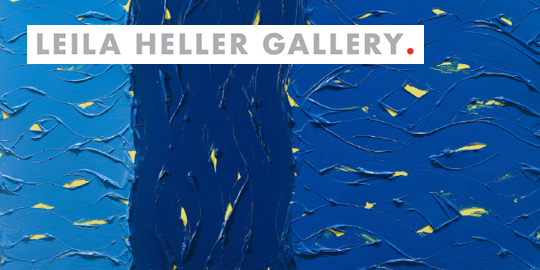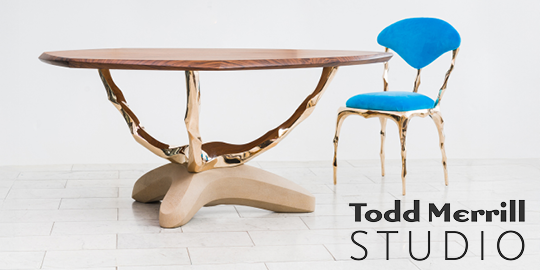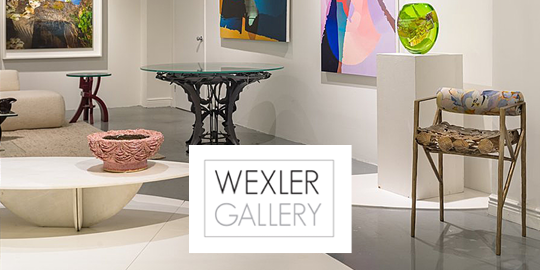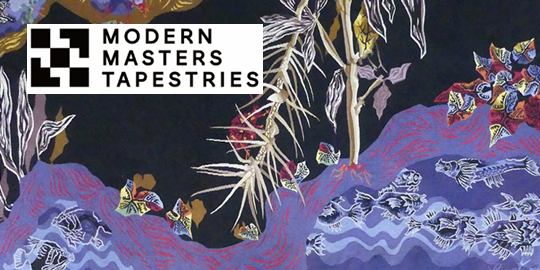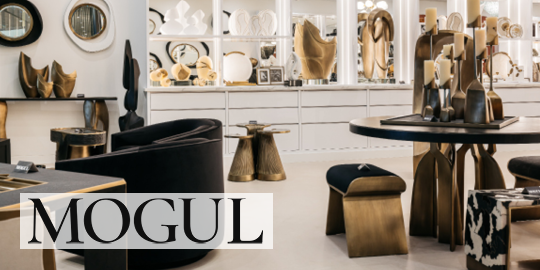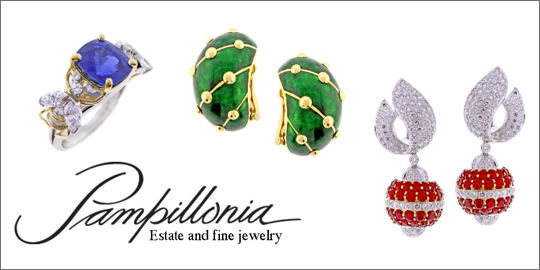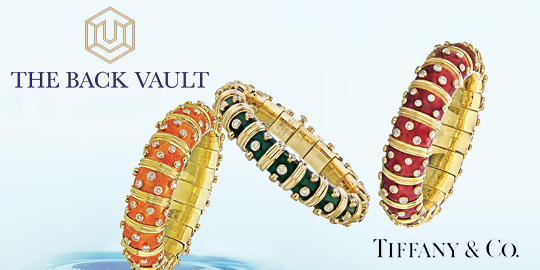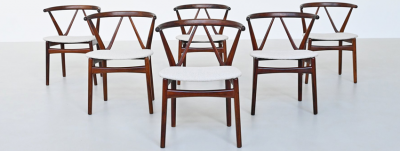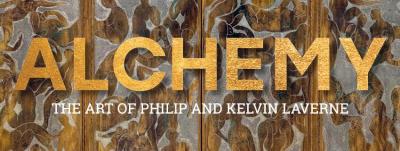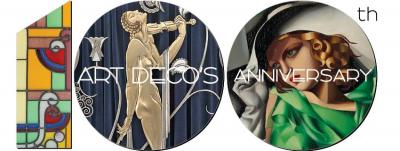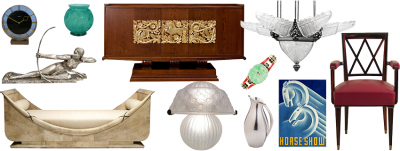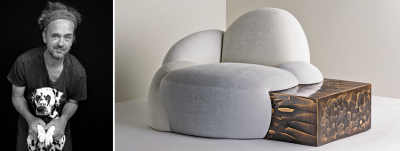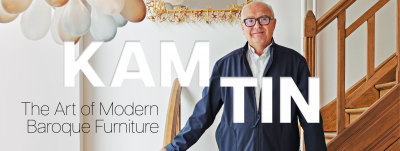The Winter Antiques Show Loan Exhibition: Legacy for the Future: The Wadsworth Atheneum Museum of Art
Founded in 1842 by arts patron Daniel Wadsworth, and opening in 1844, the Wadsworth Atheneum Museum of Art (Fig. 1) fast became a pioneering force in the art world; three decades before The Metropolitan Museum of Art in New York and the Museum of Fine Arts in Boston. Its original Gothic Revival façade resembles a castle, while its campus of connected buildings comprises groundbreaking examples of Beaux-Arts, International Style, and Brutalist interiors, all forward-thinking in the history of museum architecture. The Wadsworth Atheneum was the first museum in the nation to acquire works by Caravaggio, Frederic Church, Joseph Cornell, Salvador Dalí, Piet Mondrian, and Joan Miró, and the first to exhibit major surveys of works by Italian Baroque masters, Surrealists, and Pablo Picasso. As the Winter Antiques Show’s selection for the 2016 loan exhibition, the Wadsworth Atheneum has brought together an array of intriguing objects that illuminate the unique story of America’s oldest continually operating public art museum.
From the beginning, the museum committed itself to the art of its time. Founder Daniel Wadsworth supported emerging American artists—including Thomas Sully, whom Wadsworth commissioned to paint his portrait in 1807 (Fig. 2). The sitter’s faraway gaze and nonchalant pose suggest Wadsworth’s visionary character and attest to the talent that would make Sully the leading portrait painter of his day in Philadelphia.
Wadsworth’s private collection reflected his friendship with Hudson River School painter Thomas Cole. Wadsworth changed the history of American landscape painting by persuading Cole to accept Frederic Church, a young Hartford native, as his student. After only two years of study, Church made his first documented sale when the fledgling museum purchased his painting depicting the founding of Hartford, a scene with evocative biblical references to the Flight into Egypt (Fig. 3).
When Wadsworth died in 1848, his personal collection came to the museum, forming the foundational core of Hudson River School landscape paintings enriched through later purchases and gifts by donors such as Elizabeth Colt, the widow of firearms magnate Samuel Colt. In 1905, the Colt collection—masterpieces of nineteenth-century American and European paintings and decorative arts, including Samuel’s personal firearms—was bequeathed to the Atheneum. Elizabeth Colt also gave the museum $50,000 for an additional building. Soon after, Hartford-born banking tycoon J. Pierpont Morgan proposed erecting the Junius Spencer Morgan Memorial Building in his father’s honor. Both the Tudor Revival Colt Memorial Building of 1910 and the Beaux-Arts Morgan Memorial Building of 1910–1915 were designed by Benjamin Wistar Morris; the latter served as a prototype for the Pierpont Morgan wing of The Metropolitan Museum of Art.
In 1917, J. P. Morgan Jr. presented the Atheneum with more than 1,300 objects from his father’s collection of Greek and Roman antiquities and European decorative arts. Among the marvels was a seventeenth-century nautilus shell, cleverly transformed by a German goldsmith to resemble a snail, with the painted silver figure of a Moor—perhaps a personification of Africa—whimsically riding on top (Fig. 4). Morgan also donated his 1926 purchase of Wallace Nutting’s (1861–1941) extensive collection of early American furniture (Fig. 5) and wrought iron. Nutting, a congregational minister turned photographer, writer, and antiquarian, amassed a large collection of decorative arts for use in his popular hand-tinted “colonial” images and as prototypes for a reproduction furniture company. As the author of such standard works as Furniture of the Pilgrim Century and the three-volume Furniture Treasury, Nutting was a leading figure in the American Movement of the 1920s and 1930s.
In 1927—a propitious time for the museum that included a significant bequest honoring Ella Gallup Sumner and Mary Catlin Sumner—the trustees hired as director A. Everett “Chick” Austin Jr., who would serve until 1944. The young Harvard graduate presented America’s first Italian Baroque exhibition in 1930, a prelude to brilliant purchases of Baroque art with the Sumner Fund in the 1930s and 1940s. Among them was Caravaggio’s Saint Francis of Assisi in Ecstasy with the artist’s own face mirroring Christ’s suffering (Fig. 6).
In the 1930s, art world luminaries like Salvador Dalí, Alexander Calder, Gertrude Stein, George Balanchine, Le Corbusier, Cecil Beaton, Martha Graham, Agnes de Mille, Aaron Copland, and Virgil Thomson came to Hartford to experience and participate in Austin’s groundbreaking exhibitions and programs. Austin believed that what he called contemporary “living things”—“pictures, sculpture, architecture, decorative arts, even music and movies”— must take their places beside great works of the past because “we must surely seek to live in the present and try to create the new forms which are to be our legacy to the future.” 1 Austin introduced Surrealism to American audiences in a seminal exhibition in 1931. Painted in 1934 and purchased the following year, Paranoiac-astral Image was one of the earliest paintings by Dalí, today the most popular master of illusionistic Surrealism, to enter the collection of an American museum. Although intimate in scale, the painting depicts an immense landscape that evokes his childhood memories on the Costa Brava. The trancelike figures populating the scene represent family members and the artist as a child. In the foreground is a shell-like amphora, an emblem of the enduring power of historical rather than personal memory. It reappears in several paintings by Dalí, most spectacularly in Apparition of Face and Fruit Dish on a Beach, painted at the height of his fame and also in the Atheneum’s collection.
The opening of the Samuel P. Avery Jr. Memorial wing—the first International Style interior in a museum—in 1934 was celebrated by two firsts: the nation’s first comprehensive Picasso exhibition and the world premiere of Four Saints in Three Acts by Gertrude Stein and Virgil Thomson, the first American opera with an all-black cast. The Hartford Festival, an extravaganza organized by Austin, involving avant-garde artists in a week-long social and cultural pageant, took place at the Atheneum in 1936. It culminated with the Paper Ball, a dazzling costume party in which the guests and the Avery wing of the museum itself were festooned in fantasies made of paper. Among the costume designers for the Paper Ball was Connecticut-based Alexander Calder. His numerous playful creations in the Atheneum’s collection include jewelry made to express his affection for Eleanor “Nellie” Howland Bunce, who had a long association with the art world that began when she became Austin’s executive assistant (Fig. 7).
From 1946 to 1966, Charles C. Cunningham, the museum’s longest-running director, enlarged the scope of the collections in medieval and Asian art, seventeenth-century Dutch paintings, French impressionism, nineteenth-century American art, modernism, and contemporary art. Elie Nadelman’s Dancer, for example, attests to the artist’s innovative use of folk art as a muse for modernist sculpture and the Atheneum’s passion for both the visual and performing arts (Fig. 8). Cunningham used the Sumner Fund to purchase Northern Point just months after Andrew Wyeth completed it (Fig. 9). The director wrote to every living artist represented in the collection with the intent of archiving their responses for present and future scholars. Wyeth responded by explaining that to capture this bird’s-eye view, he climbed up on the roof of a two-hundred-year-old house in the Penobscot Bay in Maine.
MATRIX, the museum’s groundbreaking series of experimental solo shows by contemporary artists, began in 1975 under director James Elliott. The first MATRIX artist was Ellsworth Kelly, whose elegant watercolor of a cornstalk was purchased from that show. The same simplicity characterizes Red Orange (Maya), Kelly’s painting of two red circles pulsating on an orange ground (Fig. 10). Although abstract, its inspiration, as suggested by the title, derives from nature: the palette of Mexico and Central America where the ancient Maya lived. The painting’s donor, Susan Morse Hilles, an art collector, trustee, and benefactor, gave twenty-nine works to the museum.

- Fig. 12: Reginald Marsh (1898–1954), Wooden Horses, 1936. Tempera on board, 24 x 40 inches. Wadsworth Atheneum Museum of Art, Hartford, Conn. The Dorothy Clark Archibald and Thomas L. Archibald Fund, The Krieble Family Fund for American Art, The American Paintings Purchase Fund, and The Ella Gallup Sumner and Mary Catlin Sumner Collection Fund (2013.1.1).
Among more recent acquisitions is a desk carved by African American craftsman William Howard, from around 1870 (Fig. 11). It is a useful piece of furniture, a sculptural work of art, and a vivid portrait of an emancipated slave living in the Deep South, who defines himself through carved pictograms of everyday objects. Images such as shovels, picks, and water buckets allude to the grueling work of field slaves; washboards, scissors, and tableware illustrate the tireless toils of domestic slaves; and chisels refer to carpentry work. At the center, a pistol invokes the violence of the Civil War that led to freedom for him and his descendants. The gun connects the desk to the Atheneum’s renowned Colt firearms collection.
By the time Susan L. Talbott became director in 2008, the challenge facing America’s oldest art museum was addressing structural concerns that necessitated a multi-year, $33 million renovation. Construction encompassed new roofs, the installation of a proprietary power plant, and the creation of a state-of-the-art art storage facility. The State of Connecticut invested $25 million in the museum’s renovation. In January 2015, the Atheneum unveiled the newly refurbished and reinstalled Post-War and Contemporary Art galleries, brimming with works by Franz Kline, Jackson Pollack, Martin Puryear, Cindy Sherman, Willem de Kooning, Robert Rauschenberg, Tony Smith, Kara Walker, and Andy Warhol. Also opened in January was the expanded and renovated special exhibition space. The popular inaugural show, Coney Island: Visions of an American Dreamland, 1861–2008, is the first exhibition to look at the site not only as a strip of sand in Brooklyn but also as a seminal place in the American imagination—a muse for artists for more than one hundred and fifty years.
In anticipation of the exhibition—now on view at the Brooklyn Museum until March 13, 2016—the Atheneum purchased Reginald Marsh’s Depression-era Wooden Horses (Fig. 12). The artist, who often declared “the best show is the people themselves,” put himself on show. Dressed in a gaudy outfit, Marsh portrayed himself holding a younger woman in his arms while riding on the Racing Derby Merry-Go-Round, which rotated at an astounding twenty-five miles per hour. Using energetic contours to convey the dizzying motion, Marsh explored speed and modern forms of romantic pursuit.
Role-playing by artists has invigorated self-portraiture from time immemorial. In 2013, a $9.6 million bequest to fund the purchase of European masterworks was received from the estate of Charles H. Schwartz. The first painting acquired was a rare self-portrait by one of the most sought-after artists of both her time and ours. Artemisia Gentileschi’s Self-Portrait as a Lute Player is the first painting by a female artist of the Baroque period to enter the Atheneum’s collection (Fig. 13), joining masterworks such as her father Orazio Gentileschi’s Judith and Her Maidservant with the Head of Holofernes. In her self-portrait, Artemisia wears a luxurious costume with a low-cut bodice and embraces the traditional association of seductive women with music and love. What is astonishing to contemporary viewers is how this intimacy is married to her edgy rather than submissive gaze.
In September 2015, Self-Portrait as a Lute Player had its public debut at the reopening of the Beaux-Arts Morgan Memorial Building—restored to its historic splendor. It was the museum’s most comprehensive reinstallation of European art in more than a generation. Stunningly integrated paintings, sculpture, drawings, and decorative arts—ancient glass and bronzes, Italian maiolica, nautilus cups, ostrich egg ewers, mounted ivories, pottery, silver, ceramics, and extraordinary porcelain—tell stories about shared human experiences, revealing how people lived their everyday lives, how they related to the natural world, how they yearned to believe in something greater than themselves.
Entering the museum today, you will be greeted by the newly acquired illuminated artwork, OMG by Jack Pierson, installed hovering above the Main Street entrance (Fig. 14). A mash-up of three found letters from old signs, OMG provides an engaging element to the museum’s historic, Gothic-revival façade. The texting-era exclamation echoes the response of many visitors at this transformative moment in the long history of the Wadsworth Atheneum, a crown jewel in the city, state, and nation.
-----
Robin Jaffee Frank, Ph. D., is chief curator and Krieble Curator of American Paintings and Sculpture, the Wadsworth Atheneum Museum of Art, Hartford, Conn.
This article was originally published in the 16th Anniversary (Spring 2016) issue of Antiques & Fine Art magazine, a digitized version of which is available on www.afamag.com. Antiques & Fine Art and afamag are affiliated with InCollect.com.


